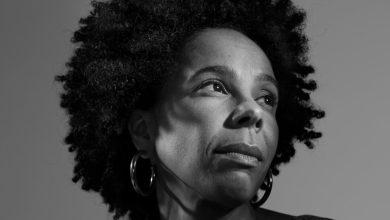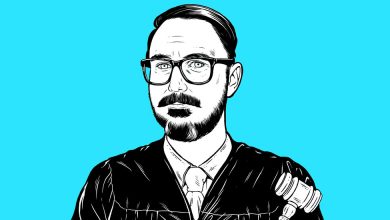In Ecuador, Homes That Are Part of the Mountains

BEFORE THEY STARTED building Casa Pitaya, a country house on the rainy western slopes of the Ecuadorean Andes, the architects José María Sáez, Florencia Sobrero and Martín Real presented their clients with an image that would guide them through two years of design and construction: a rusted-out car submerged in water, its frame overtaken by coral. “That was our ideal,” says Sobrero, 33, who moved from her native Argentina in 2015 and formed the office Taller General (General Workshop) with Real, 30, two years later: “A foreign structure that would allow the environment to consume it.” The architects hoped the dwelling, rather than disappearing into the surrounding cloud forest, would encourage the landscape’s growth, becoming not so much a mountain house as part of the mountain itself.
Completed in November 2021 for an Andean historian and her husband, who works in environmental remediation, the 3,200-square-foot home hasn’t been obscured by the towering bamboo that rises behind it. Built largely from intersecting beams of laminated timber and slim steel girders, the structure stands like scaffolding among native fruit trees, a bare framework of joists and crossbeams supporting the boxes of steel and wood that contain the home’s rooms. From a distance, it resembles a bird blind — or perhaps the concrete stilts that lift houses in informal settlements over volcanic hillsides around Quito, the Ecuadorean capital 20 miles to the east. But Casa Pitaya is also a direct outgrowth of its site, its scale determined by the length of beams (roughly 32 feet) that the contractors could safely maneuver down the curving dirt drive. The house’s beauty — its warmth, its naked vulnerability — is both incidental and natural, a response to the singular mountain territory from which much of Ecuador’s most provocative new architecture rises.
Set more than 9,300 feet above sea level on a rain-soaked plateau traversed by the Equator, Quito exists at a narrow point in the northern Andes with access to tropical forests, temperate valleys and coastal fisheries. The region historically supported several autonomous but interdependent chiefdoms sustained through trade and organized around shared property and labor — cooperative traditions that survived invasions by the Inca in the 15th century and the Spanish less than 100 years later and persist today, though radically transformed through widespread urbanization, in the system of shared work known locally as the minga.
Later, the discovery of Amazonian oil reserves generated an economic boom beginning in the 1970s that helped establish Ecuador as a beacon of relative peace on a troubled continent. But two decades of rampant inflation followed, leading in 2000 to the center-right government’s replacement of the national currency with the American dollar. Between 1998, as the economy neared collapse, and 2006, the year before the leftist economist Rafael Correa ascended to the presidency, hundreds of thousands of Ecuadoreans fled to Spain and the United States. In May 2023, the conservative president Guillermo Lasso dissolved the National Assembly to avoid impeachment proceedings based on charges of embezzlement, which he has denied, triggering a flash election three months later. By the time Ecuador’s current president, Daniel Noboa, was elected in a runoff, the country had suffered months of political turmoil, including the assassination of a presidential candidate in broad daylight on the streets of central Quito. Noboa has since tightened security measures across the nation in the wake of prison uprisings and a homicide rate that nearly doubled last year. In August, Ecuador became the first country to pass a localized moratorium on oil exploration by national referendum, a victory for Indigenous and environmental activists.
In the shadow of all those upheavals, Quito has become an unexpected locus for a group of architects who argue, perhaps unsurprisingly, for added transparency, community and sustainability. All close friends, all under the age of 50, all guided by the imperative — repeated among them as a mantra — to “do more with less,” these practitioners, organized in collectives, build with materials like recycled wood and earth and share their resources and knowledge freely. “Their architecture is part of the land,” says Ana María Durán Calisto, 52, a Quito-born architect and scholar at Yale. “They’re neither Modernist architects of Latin American socialism nor neoliberal architects of Latin American corporatism,” she says. “They are architects of the minga.”




